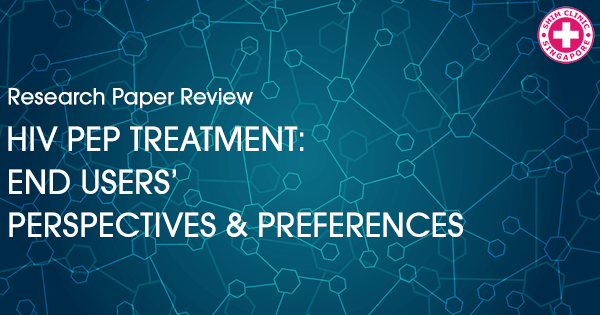HIV PEP has been a revolutionary treatment that has prevented many who have been exposed to the HIV virus from getting infected. Information, news, scientific findings, views and recommendations have always been coming from healthcare institutions and scientific bodies, but seldom do we get the chance to know views and experiences of end-users who are prescribing PEP therapy. The views of the people using or have used post-exposure prophylaxis (PEP) were recently reported in a publication of the journal “Clinical Infectious Diseases”. This publication was developed by the WHO to help inform recommendations and guidelines for HIV PEP.
Research Methods
The study was conducted by gathering feedback and views from people using or have used PEP. Several methods were used in the study.
- Data was collected by searching for papers published online (PubMed and Web of Knowledge) and also searching by hand for articles reporting on HIV PEP outcomes. 10 studies were identified with focus on men who have sex with men while 26 studies were identified that had a focus on healthcare workers.
- A review of the recommendations of the WHO was done for this study by two different researchers.
- Focus group discussions were done in Ghana related to the preferences, attitudes, behaviors, knowledge, drug regimens, testing, follow-ups and drug adherence in 20 female sex workers.
- An online survey was conducted in three different languages in which 306 responses were gathered. The people which took part in the online survey were approached through the help of the authors of PEP published studies and regional WHO and key organizations related to HIV. The healthcare workers who had used PEP were also included in the survey.
Research Results
The results showed that the healthcare workers prefer the use and prescription of a 3-drug PEP based on the cost, availability and overall use. There was no significant difference in the opinion about the overall effectiveness of 2 versus 3-drug PEP.
When it came to online survey responses from healthcare workers with experience prescribing HIV PEP prescription to children, results were quite limited. From the results, there was a trend of using ritoinavir boosted lopinavir as the third drug in PEP when prescribing for children. while Efivirenz was preferred for children 3-10 years of age as the third drug.
Most of the healthcare workers were in favor of prescribing 28-day regimen for PEP. 65% of the respondents were of the opinion that besides HIV specialists, healthcare workers should be able to prescribe the 28-day PEP treatment. More than 86% of the health care workers believed that the Starter Pack is effective. 73% of the healthcare workers who were themselves using PEP preferred to be given 28-day PEP on their first visit.
Conclusion
Surprisingly, access to care was found to be the barrier for completion of PEP which included difficulties in access to the clinics and health care centers. The respondents emphasized that counseling plays a vital role in adherence to the PEP. The overall follow-up rate, knowledge of potential risks, and completion of PEP is better with counseling.
Although the data presented in this publication encompasses a variety of information but the quantity and quality of data is insufficient to help finalize PEP guidelines. As the information for the report was gathered from a limited population hence the authors believe that these results are not replicable to the general population.
Source:

